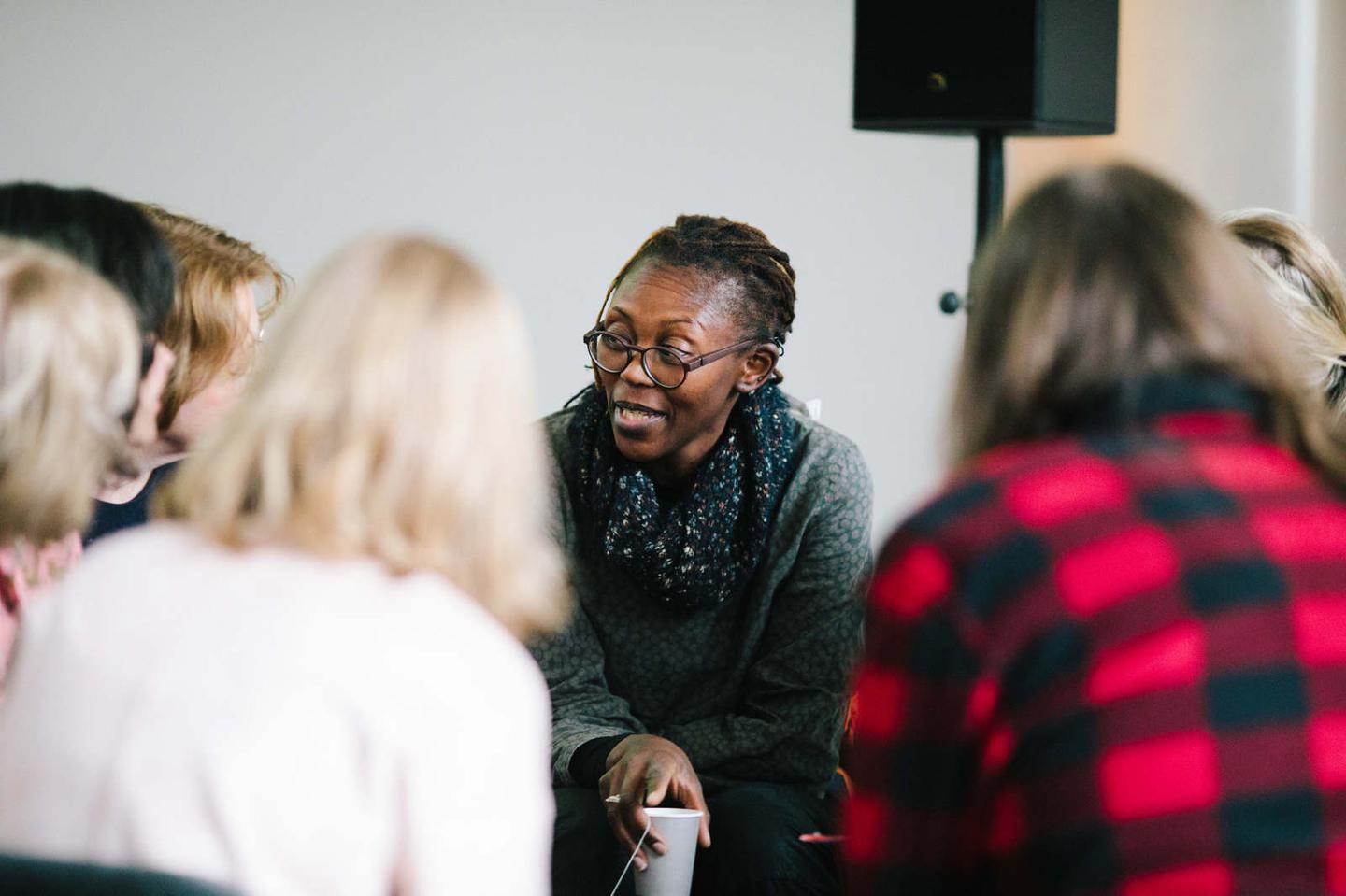Symposium: The Agency of Art
When: 09-11.03.2018
Where: Office for Contemporary Art Norway (OCA), Oslo
Language: English
What is the significance of a place of art? And can it be measured? In our polarized times the function of the small contemporary art institutions as places for critical reflection and exchange of experience is more relevant than ever. But in spite of their critical purpose, these institutions are often underfinanced and their experience ignored. Why?
More than 40 smaller visual arts institutions from the Nordic countries have now formed a network in order to address the question of art’s agency. A reception in Kassel on June 8 (in conjunction with the opening of Documenta 14) marked the beginning of this working group, which will culminate in a large-scale symposium in Oslo on March 9-11, 2018. Leading experts within the cultural-economic field will take part in the symposium, among them: Pier Luigi Sacco, professor of Cultural Economics at IULM University of Milano; Andrea Phillips, art professor and director of the BxNU Research Institute, Northumbria University and BALTIC Centre of Contemporary Art in Newcastle; Lars Strannegård, professor and president at the Stockholm School of Economics; Binna Choi, curator and director of Casco – Office for Art, Design and Theory plus Azar Mahmoudian, curator and researcher based in Tehran.
How can one fathom the significance of smaller art institutions within the greater arts’ ecosystem? One key aspect is their ground-breaking approach to relating art to society; contributing to the cultural literacy of their audiences. Another is their important role in local communities whilst maintaining a constant dialogue within the international arts context. But how can we create dialogue around the values that are being built – beyond visitation numbers and media coverage? How do we measure their value qualitatively as well as quantitatively? And how does qualitative data correspond with current funding models, as opposed to quantitative data?
What cooperative processes can be adopted so that artists and culture, small and large institutions, municipalities, regions, states and federal politics all cooperate to encourage art’s potential? During the fall of 2017 freelance curator Jonatan Habib Engqvist and Nina Möntmann, professor of art theory and curator, have worked on a report focusing on the artistic, social, societal and economic values of the contemporary kunsthalles within a Nordic context. The report will form the basis for the symposium in March.
The organisation of the new network will be based on three existing associations of kunsthalles: Foreningen af Kunsthaller i Danmark which has been active since 1992; Klister in Sverige and Kunsthallene i Norge, which both took shape in 2011. Each of these networks has arisen out of a need to organize in order to highlight and debate the function of small and medium sized contemporary art institutions, their significance as well as their existing terms of governance.
Situational reports have been commissioned by all three networks from their respective countries. The Danish report has the title The Kunsthalle: A crucial player in the contemporary arts and for the contemporary arts. The Swedish report No exceptions.
Klister (Sweden): Marabouparken konsthall, Sundbyberg; Tensta konsthall; Bildmuseet i Umeå; Göteborgs konsthall, Gothenburg; Gävle Konstcentrum; Röda Sten konsthall, Gothenburg; Skövde kulturhus (konsthall och konstmuseum); Konsthallen Bohusläns museum, Uddevalla; Museum Anna Nordlander, Skellefteå; Botkyrka konsthall, Tumba; Kalmar konstmuseum; Luleå konsthall; Borås konsthall; Lunds konsthall; Konsthall C, Farsta; Konsthallen i Haninge kulturhus; Alingsås kulturhus/konsthall; Signal – center för samtidskonst, Malmö; Örebro konsthall; Index, Stockholm; Varberg konsthall, Konsthallen, Kulturcentrum Sandviken; Grafikens Hus, Södertälje and BAC, Visby.
Kunsthallene i Norge: Kristiansand Kunsthall; Kunsthall Stavanger; Oslo Kunstforening; Tromsø Kunstforening; Kunsthall Grenland, Porsgrunn; Kunsthall Oslo; Fotogalleriet, Oslo; Trafo Kunsthall, Asker; Bomuldsfabriken, Arendal; Stiftelsen 3,14, Bergen; Kunsthall Trondheim.
Foreningen af Kunsthaller i Danmark: Brandts 13, Odense; Den Frie Udstillingsbygning, Copenhagen; Fotografisk Center, Copenhagen; Galleri Image, Aarhus; gl Holtegaard, Holte; GL STRAND, Copenhagen; KunstCentret Silkeborg Bad; Kunsthal Charlottenborg, Copenhagen; Kunsthal Nord, Aalborg; Kunsthal Aarhus; Kunsthal 44 Møen, Askeby; Nikolaj Kunsthal, Copenhagen; Overgaden. Institut for Samtidskunst, Copenhagen; Rønnebæksholm, Næstved; Sophienholm, Lyngby; Viborg Kunsthal

Symposium: The Agency of Art
Det nye nettverkets organisering baseres på tre eksisterende sammenslutninger av kunsthaller: Foreningen af Kunsthaller i Danmark som har vært aktiv siden 1992; Klister i Sverige og Kunsthallene i Norge, som begge tok form i 2011. Hvert og ett av nettverkene har oppstått ut ifra et behov for å organisere seg for å løfte fram og debattere små og mellomstore samtidskunstinstitusjoners funksjon, betydelse samt. de vilkår som finnes for å bedrive slik virksomhet. Alle tre nettverk har bestilt situasjonsrapporter fra sine respektive land. Den danske rapporten har tittelen Kunsthallen: En afgørende aktør i samtidskunsten og for samtidskunsten. Den svenske rapporten Inga undantag.
Klister (Sverige): Marabouparken konsthall, Sundbyberg; Tensta konsthall; Bildmuseet i Umeå; Göteborgs konsthall; Gävle Konstcentrum; Röda Sten konsthall, Göteborg; Skövde kulturhus (konsthall och konstmuseum); Konsthallen Bohusläns museum, Uddevalla; Museum Anna Nordlander, Skellefteå; Botkyrka konsthall, Tumba; Kalmar konstmuseum; Luleå konsthall; Borås konsthall; Lunds konsthall; Konsthall C, Farsta; Konsthallen i Haninge kulturhus; Alingsås kulturhus/konsthall; Signal – center för samtidskonst, Malmö; Örebro konsthall; Index, Stockholm; Varberg konsthall.
Kunsthallene i Norge: Kristiansand Kunsthall; Kunsthall Stavanger; Oslo Kunstforening; Tromsø Kunstforening; Kunsthall Grenland, Porsgrunn; Kunsthall Oslo; Fotogalleriet, Oslo; Trafo Kunsthall, Asker; Bomuldsfabriken, Arendal; Stiftelsen 3,14, Bergen; Kunsthall Trondheim.
Foreningen af Kunsthaller i Danmark: Brandts 13, Odense; Den Frie Udstillingsbygning, Köpenhamn; Fotografisk Center, Köpenhamn; Galleri Image, Aarhus; gl Holtegaard, Holte; GL STRAND, Köpenhamn; KunstCentret Silkeborg Bad; Kunsthal Charlottenborg, Köpenhamn; Kunsthal Nord, Aalborg; Kunsthal Aarhus; Kunsthal 44 Møen, Askeby; Nikolaj Kunsthal, Köpenhamn; Overgaden. Institut for Samtidskunst, Köpenhamn; Rønnebæksholm, Næstved; Sophienholm, Lyngby; Viborg Kunsthal, Konsthallen, Kulturcentrum Sandviken; Grafikens Hus, Södertälje og BAC, Visby.